Washington Irving’s short story The Legend of Sleepy Hollow has been cited as “the first great comedy horror story”, as readers were made to “laugh one moment and scream the next”. This is, in essence, what comedy horror movies are all about.
1. Comedy
What Makes a Comedy a Comedy?
Comedy films are obviously, most of all, designed to elicit laughter from the audience.
Comedy writers humorously exaggerate the situation, language, action but most importantly, characters in their films. By observing the deficiencies, foibles and frustrations of life the comic can then parody them.
- Comedy makes us laugh because of the contrast between a character’s blind egotism, along with the delusion of their existence or goal, and our capacity to watch from afar, to see what the character cannot perceive about themselves.
But comic characters must be woven into a comic story in order to get a real, full-blown comedy. Lots of scripts have funny moments but what is it that makes the plot a comedy? What is the shape of comedy? Let’s take a look at the key points.
The Archetypal Comic Plot
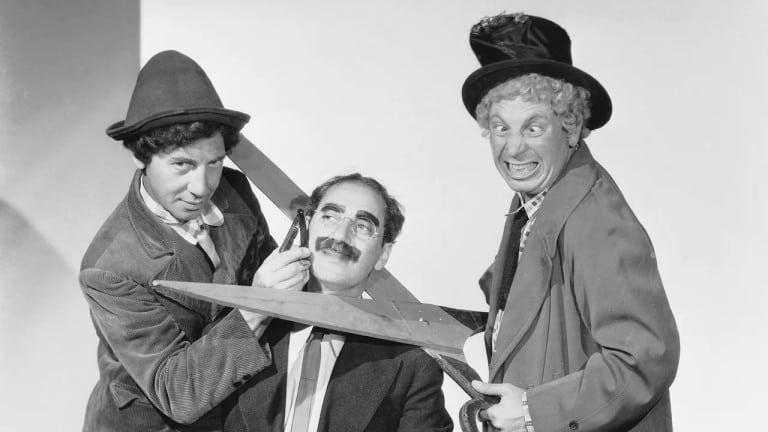
There is a type of plot that links Shakespeare’s comedies to Marx Brothers films. The plot looks like this:
- It sets up a conflict between two characters or a group of characters. At least one side of these conflicts is completely obsessed with their desire. The characters live in a world of confusion, uncertainty and frustration and are closed off from each other.
- As conflict rises and misunderstandings arise, the characters’ confusion becomes messy. The pressure of darkness is at its most acute and all characters are caught in its nightmarish tangle.
- The obsessed party meets a crucial turning point; the moment when they are forced to accept that their obsession has gone too far.
- In the resolution, the obsessed party realizes the error of their ways, allowing the situation to be miraculously transformed. The world consequently returns to harmony.
As you can see, the key to comedy is the transition between the obscured twilight of misunderstanding, the light of recognition and an untangled plot in the climax.
The cause of all this confusion and conflict is the character’s inability to see the truth about the others, the situation or themselves. It’s this limited awareness that causes chaos and gets the audience laughing.
Romantic Comedy Structure
In romantic comedies, the structure is edited slightly:
Two characters fall in love early on in the story but are kept apart by a misunderstanding between each other or an external pressure of some kind. This might be, for instance, a disapproving family or a pre-existing relationship.
In some way, the characters are ignorant of one another’s true identities. The moment of recognition is the moment the characters realize who they or their lover really is.
- In Aladdin, for example, Princess Jasmine must face the fact that Prince Ali is in fact the poor Aladdin.
- Whilst in 10 Things I Hate About You, Kat learns that Patrick was paid to take her out.
Shakespeare gifted the world with ‘love tangle’ plots. Here, lovers meet, fall in love, fall in love with others, mistake each other for different people and then finally return to harmony, with everybody paired off with the correct partners. A mess of misunderstanding is often what can make romance comical.
Confusing Comic Conventions
But how do comic writers create this confusion? Some commonly used devices that result in chaos include:
- Characters are in disguise or they swap identities.
- Characters are concealed in cupboards or hidden behind furniture while we wait for their presence to be revealed or embarrassingly discovered.
- There is a misunderstanding of comprehension. For example, one character has a different interpretation of a word than another and it leads to spiralling consequences.
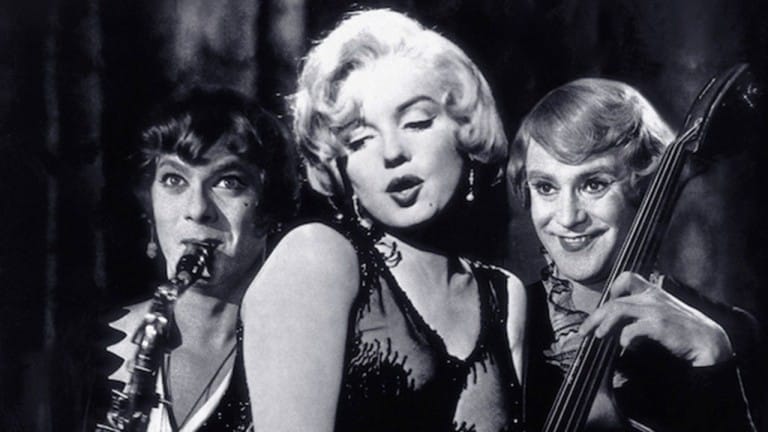
General ignorance of characters to the truth of the matter is at the heart of comedic storytelling. Obscured identities via ignorance of birth, disguises, impersonations and cases of mistaken identity are conspicuous examples.
The chaos that ensues in the comic plot will inevitably get worse until the knot the characters have tied themselves into becomes too tight. Then, and only then does everything sort itself out in a euphorically happy ending. The whole truth and nothing but the truth will be revealed; all disguises are cast aside and the characters are left just as they are.
Such conventions are more outright in the comedies of Shakespeare and his contemporaries. But their subtle shadow can be felt in comedy scripts of the present.
Comedic Forms
There are lots of ways to be funny. But comedy can be generally divided into the main categories: slapstick, screwball, deadpan, verbal, black comedy, parody/spoof/satire, and farce.
You’ll recognize all of these, but what are their actual definitions? They can be vital to understand in order to deploy strategically in a comedy horror, for example. So let’s break them down…
Slapstick
This includes broad, aggressive, physical and visual action – but it’s often harmless or painless cruelty and violence. This may include, for example, pies in faces, slipping or crashing into something.
To be done well, slapstick requires perfect comedic timing and well-honed performance skills. Harold Lloyd, Laurel and Hardy and Abbott and Costello, for instance, are masters of slapstick.

Screwball
An offspring of slapstick, this denotes lunacy, eccentricity, ridiculousness and erratic behaviour. These films combine farce, slapstick and witty dialogue. An example of a screwball comedy is It Happened One Night.
Deadpan
Expressionless-faced comedians often face the world stoically. Deadpan comics deliberately present emotional neutrality in their delivery as a contrast to the absurdity of their subject matter (this can work particularly well in a comedy horror movie). Said delivery is often supposed to be unintentional. Rowan Atkinson, Aubrey Plaza and Michael Cera can be described as deadpan performers.
Verbal
This is typified by films in which the character’s dialogue does most of the work, be it the Marx Brothers’ verbal absurdity, Mae West’s sexual innuendo or the self-effacing humour in some of Woody Allen’s comedies.
Black or Dark Comedy
This comes in sarcastic or sardonic stories that make light of serious, pessimistic subjects such as war, death or illness. Black comedy is used as a tool to explore darker issues by provoking amusement and often discomfort.
Parody, Spoof and Satire
These are films that ridicule, impersonate or imitate the style, conventions, characters (often through caricature) or motifs of other serious work. The Scary Movie films, for example, are spoofs of slasher horror films. Whilst Walk Hard: The Dewey Cox Story is a parody of music biographies.
Farce
Farces often overlap with other comedies. They include outrageous plots, unlikely and absurd circumstances, frantic-paced action, mistaken identities, and major transgressions (such as extra-martial fidelity). There’s often lots of verbal humour and physical slapstick.
All of these can be woven into your comedy horror movie. But more on that later. For now, let’s move on to the horror genre and its key facets.
2. Horror
What Makes a Horror a Horror?
In his seminal work The Seven Basic Plots, Chris Booker describes “The Monster and the Thrilling Escape From Death”. This plot can be found in myths, folk tales, science fiction, thriller and horror.
So, if these basic plot structures can be found in many genres, what makes horror that much more terrifying?
Horror is a genre seeking to make its audience both terrified and repulsed, ideally at the same time. Screenwriters and filmmakers use visceral cinematic techniques and dark, disturbing subjects to provoke psychological reactions in us. They want us to feel as uncomfortable and emotionally heightened as possible.
But how is this typically achieved?
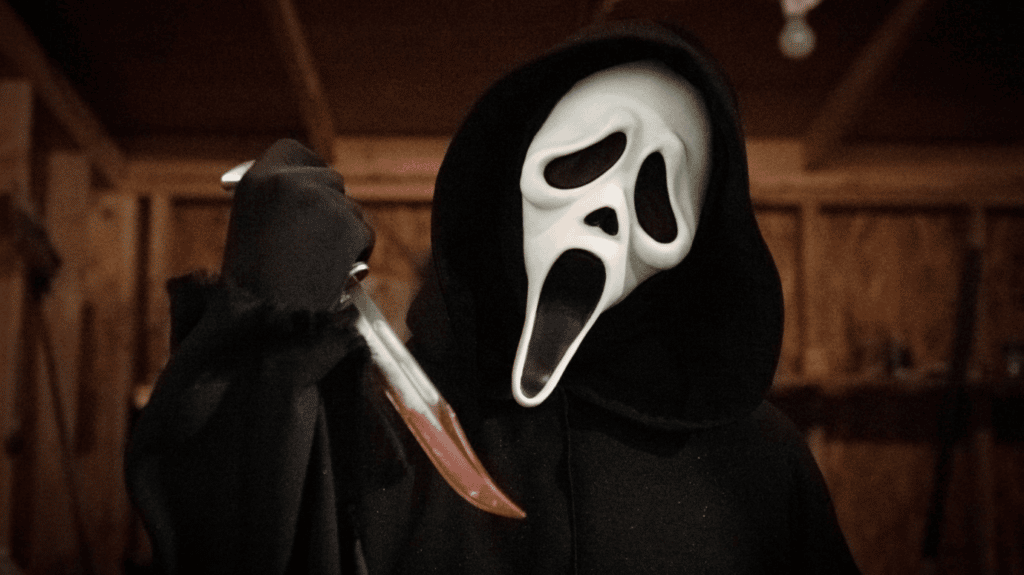
How Do We Structure a Horror Movie?
The answers lie in the opening and ending of a horror movie. At the beginning of act one, it is essential that horror movies show that, as Blake Snyder puts it “the world is not what it seems”.
- This is where the audience glimpses the monster or a hint of its existence. It may be shown as a prologue or after we’ve met our protagonist, but it’s essential that it’s present.
- This beat creates a feeling of unease that can propel us through otherwise ‘normal’ scenes in act one and makes us more suspicious.
The final beat of your horror movie depends on whether you want to leave the audience with an up (if not happy then positive in some respect) or down (if not absolutely terrible then negative in some respect) ending.
Snyder describes how if the hero succeeds in destroying the monster, you must make it clear that it’s only ‘for now’ – the monster has to return for a sequel (or at least the potential of threat) after all. If the protagonist is now dead, show the monster ‘relishing its victory in a changed world’.
Characteristics of Horror
Horror movies have widely known tropes and steps. They may be familiar but they are tropes for a reason… because they work. And they are potentially vital in establishing the horror side of your comedy horror movie. Let’s break down the most common beats you’ll find in horror films:
Set the Tone
The tone of horror is generally dark, depressing and/or grim. This may be expressed with dark visuals or present in the sound design. Lots of horror films, for example, utilize a low dissonant background noise that we can’t hear much but subconsciously puts us on edge.
The score is often foreboding, teasing an incoming threat. Whilst the color palette may be dark or claustrophobic. Such a shame the characters don’t take this as a warning before they enter the house their parents warned them about…
Confined Settings
It is essential for the horror writer to confine their characters in some way. They could be physically trapped in an abandoned house with a terrible storm outside or they could simply be mentally trapped in their own heads.
Either way, characters must be trapped to maintain the tension and the conflict with the monster. If they can just leave, they will. Good writing will give them logical reasons to stay.
In Get Out, for example, the red flags going on around Chris (Daniel Kaluuya) are weird enough for him to question them but not weird enough for him to leave the house. When he realizes how red those flags are, it’s already too late.
Character Sins
In Save the Cat!, Blake Snyder describes how characters in good horror movies commit a sin that results in the situation. This makes the film all the more terrifying because the monster entering seems to be partially the characters’ fault. It’s only fair that they pay the price.
However, looking at some examples, we can see that the sin doesn’t have to be committed directly by the protagonist (although it can be):
- In Jaws, for example, the sin is committed by city officials who won’t close the beach during tourist season, despite the threat offshore. They invite the monster into the house. Their sin is greed.
- The sin committed in Alien is also greed. The company send out the crew to collect samples but they don’t care if the crew survive or not as it doesn’t affect the bottom line.
Last (Wo)Man Standing
If the movie has a cast of characters, they’ll be split up and picked off during the course of the film. This is crucial as a group is stronger together. By the end of the film, the protagonist is at their weakest and most vulnerable; they are alone.
Let’s consider the general structure of The Texas Chainsaw Massacre:
- Sally and her four friends are on a road trip through Texas, ending up at Sally’s old family home.
- The groups split up to go exploring and then split up again to find the missing others. They are picked off one by one by the family of cannibals who live next door.
- At the climax, Sally is the sole survivor. She escapes Leatherface’s home and is chased through the woods. There’s nothing she can do but keep running.
Eventually, she escapes when she reaches a main road, but will be forever traumatised. This is also an example of the ‘final girl’ trope found in many horrors.
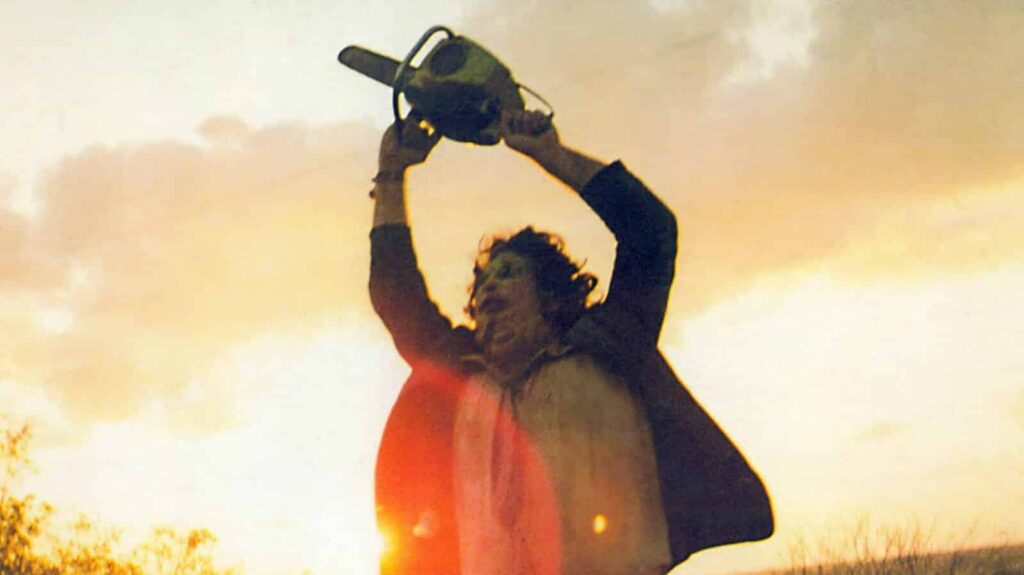
Disturbing Themes
These films often explore disturbing themes to gross us out intellectually too. Examples of themes central to the horror genre are mental illness, struggles with animal instincts, madness and blind obedience.
- In Texas Chainsaw Massacre, for instance, critics have discussed the presentation of violence against women as Sally is subjected to brutal, sadistic violence.
- The film has also been described as “the ultimate pro-vegetarian film” due to its animal rights themes; characters are slaughtered for meat like farm animals and it makes for an uncomfortable watch, encouraging the audience to think about their own consumption of meat.
Director Tobe Hooper has confirmed “it’s a film about meat” and he gave up meat while making the film. Writer-director Guillermo del Toro also became vegetarian for a time after seeing the time. This shows how horror films often take a challenging and disturbing theme and through horror effectively explore that theme‘s resonance. After all, what is more likely to shake an audience’s belief system than something visceral like horror?
The Monster
In horror movies, it’s crucial that we write monsters who are terrifying and mortally dangerous. The behaviours of monsters can be described as threefold:
- Predator: The active predator who wants to force or trick victims into being devoured.
- Holdfast: The passive monster jealously guards its lair or prize.
- Avenger: If the prize is challenged, the monster lashes out viciously, bent on pursuit and revenge.
The monster often acts in all three of these stages. For example, taking a classic (not necessarily horror) example, the giant in Jack and the Beanstalk is first predator, demanding human food, then holdfast over his treasures, then when Jack steals from him, avenger.
These roles reflect key aspects of how self-centred human beings behave. Selfish and anti-social people are either predators who are ‘after something’; they are holdfasts who grimly want to ‘hold onto something’; or avengers resentfully trying to ‘get their own back’.
Therefore, a true monster essentially represents deficiencies in human nature. The supreme characteristic of every monster is their egocentricity. We can bury this nature beneath deceptive charms or characteristics but the writer knows the heart of their monster is poisoned. The more honest we are about human deficiencies, the scarier our monsters.
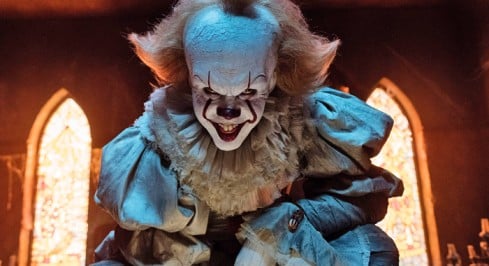
The Monster’s Achilles’ Heel and The Protagonist’s Strength
The monster has one weakness rendering it vulnerable. Its selfish tunnel vision prevents it from seeing the world clearly. The monster is literally or metaphorically blind.
Its blindness might be to the intelligence of the protagonist or the destructive power of a new virus. Whatever it is, its oversight will be its undoing.
A horror movie protagonist’s values and motivation, meanwhile, are anchored completely in contrast to the monster’s. Our hero will also, probably, act on behalf of others; to save the ‘princess’ or to liberate the community suffering in the monster’s shadow.
The hero contrasts the monster by being selfless in one respect or another. They need to be reflections of one another in a significant way. If the monster represents the depth of human depravity, the protagonist must represent the light at the end of the tunnel, the hope for humanity in the face of such horror.
The Thrilling Escape From Death
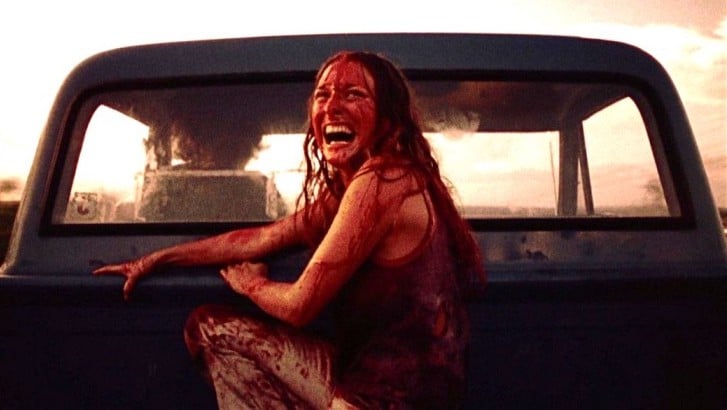
The key moment in these types of plots where the hero escapes the monster; just when it seems all is lost and destruction is inevitable, they make a miraculous escape. The previously constricting sense of imminent death is replaced by liberation.
- Approaching this moment of liberation, your script will be steadily increasing in tension as the threats to the hero’s safety become more intense.
- The audience, identifying with your protagonist, will be on the edge of their seats and feeling internally constricted and afraid. In some cases, if you’re too good at your job, the audience might be so terrified they cannot bare to watch any longer.
- When you give your hero the miraculous escape the audience has been waiting for, the release is powerful.
The release of this tension is what the horror movie buff wants. However, this escape from death has become cliché and therefore often a source of potential comedy.
And this leads us nicely on to the way in which comedy and horror can overlap, sometimes just for a moment or two, sometimes into a whole comedy horror movie.
3. The Synthesis of Comedy and Horror
So now we’ve got a background in both the comedy and horror genres, let’s look at the midsection of the Venn diagram. How do these elements typically combine into something both hilarious and terrifying? Let’s break down the key ways that comedy and horror typically overlap.
Horror Parody
One of the most common ways to write a comedy horror movie is to parody the abundance of tropes from the horror genre.
As mentioned earlier, parody is the imitation of the style of a particular writer, artist or genre with deliberate exaggeration for comic effect.
Especially when we watch old horror movies now, it is laughable how stupid some of the characters are; their willingness to walk off into dark rooms alone, for example. It’s only natural that a sub-genre was born out of this simple idea.
Let’s consider Scary Movie.
- It’s a parody of slasher movies. Most of the plot pokes fun at Scream as the film centres on figuring out the identity of a killer in a Ghostface mask.
- But Scary Movie also pokes fun at The Exorcist, The Shining, The Blair Witch Project and a host of other classic horror movies.
In parody comedy horror movies, the constant reminders that we are watching a film give the audience permission to laugh at their fears.
So if you’re interested in writing a horror parody, watch your favourite horror films – which moments do you see often and which moments make you want to laugh rather than cry? These are the moments to extract humor from. Tired methods of trying to scare audiences instead become moments to make them laugh.
Moreover, this method is also a potential way to claw back some of that initial intended horror. By using a trope for comedy instead of horror you subvert it and consequently lure the audience into a false sense of security, thus making them vulnerable to a scare.
Dark Comedy
In contrast, other comedy horror movies find their humor in dark subject matter. Writers of dark comedy know that sometimes the bleakest moments in life are not without their humor. And often laughing at a situation is a way of puncturing its seriousness and its fear. It’s a natural human instinct to burst this bubble, and examples originate from antiquity.
- The phrase “gallows humour”, for instance, originates from the German expression “Galgenhumor”, which describes a person’s cynical last words before being hanged. Yeesh.
- When Oscar Wilde lay on his deathbed, his last reputed words were “Either that wallpaper goes or I do”.
- And at his own execution, murderer William Palmer is said to have seen the trapdoor on the gallows, turned to the hangman and asked “Are you sure it’s safe?”.
You get the point.
These types of comedies don’t usually have happy endings like straight comedies. But it doesn’t matter: the audience knows they are somewhat shielded from their fears via their ability to laugh in the face of such fears.
In a comedy horror, dark humor may manifest in the characters’ deadpan reactions to the horrific goings-on. For example, in Shaun of the Dead, some of the most grotesque and violent moments are coupled with nonchalant reactions or even just plain ignorance from the characters.
So we, as the audience, get to indulge in the horror, whilst also laughing at the juxtaposition with the characters’ inappropriate reactions. Both comedy and horror are fulfilled – it’s a win-win.
Extremity and the Grotesque
Often the more horror is leant into the more cartoonish and consequently amusing it becomes. There’s a point at which our ability to watch grotesque acts of violence tips. The sense of reality breaks as the violence becomes over the top, fanciful and purposefully provocative. And our reaction to this more often than not is to laugh.
This kind of cartoonish violence can crop up in many genres. Quentin Tarantino, for example, is a famous proponent of it. However, in a comedy horror movie, it proves to be a vital way of achieving the comedic side of the equation.
How do you execute this kind of cartoonish violence within a screenplay? Well, this will be done via the tone and extent of the description.
- If you want to make sure the violence is coming across as deliberately over the top, you must try and match this in the description. So illustrate every pop of flesh or spurt of blood in gory detail.
- Bombard the audience with imagery and make them believe this spiral of blood and guts might never end.
- They’re likely to start thinking that it’s unbelievable and this will likely, in turn, elicit humor.
Of course, you don’t want to alienate an audience with a moment that is supposed to be horrific but is actually funny. So it’s all about intention and you have to make that clear within your writing. If you clearly signal the horror’s extremity is meant to be over the top, then the audience will be with you. If you’re just over-committing to depicting the horror without structure and precision, then that’s when you leave the moment open to unintentional ridicule.
So Scary it’s Funny
Similarly, this kind of intentional exaggeration can extend to many elements of a horror comedy, not just blood or gore. This is possibly most notably seen via the antagonist characters and their characterisation. And Gremlins perhaps provides the perfect example of this.
No one could deny that the gremlins aren’t scary. But it’s also hard to not laugh at them too. Their horror seems to come in large part from their faintly amusing existence. Perhaps most importantly though, they prey on a somewhat relatable fear; the idea that our cutest toys could make monstrous villains, invading the very places that are supposed to be the safest, our homes, and the very time we’re supposed to feel the safest, Christmas.
A similar formula could also be applied to a character like Pennywise from It. Here is a character so terrifying it’s almost funny. And this careful balancing act demonstrates the fine line between laughter and horror. The imagery we’re often supposed to find the most lightweight can be twisted into something terrifying. And in this unease we may find both laughter and terror, creating, overall, a powerful synthesis that bores into our minds.
Shared Set Ups – Jokes and Jump Scares
Joke
The structure of a typical joke goes like this: Framing, telling, punchline.
- The framing is important because it sets the tone, and the listener must be primed (and accepting) of the forthcoming joke. Obvious examples include: “Have you heard the one…” or “A man walks into a bar…”
- If the audience isn’t prepared or in the mood for it, the joke will fall flat, no matter how good it is.
- After its framing is the telling of a joke. The telling is the meat of it and is often told in the form of a story. The telling must be interpretable by the audience in a logical way.
- The punchline then makes the audience laugh. A trigger in the punchline usually causes the audience to abruptly shift their understanding of the telling to a secondary, opposing interpretation.
Both their interpretations should make sense, but the audience doesn’t expect the ‘reality’ of the punchline. This is what evokes humor.
Jump Scare
The set-up for a joke is the same as the set-up for a jump scare.
- The tone is set. For example, it’s a haunted mansion at night. Foreboding music, eerie darkness. The protagonist hears something out the window…
- They approach, leaning their hand on the glass. They look out, thinking they see a figure in the distance.
- SHRIEK – a woman screams at them directly in front of the glass.
Ok, granted, it’s not very scary on paper, but on-screen… point made.
In a comedy horror movie, the tension comes in when the audience isn’t sure whether they should be ready to laugh or scream. This powerful synthesis puts the audience on edge in a potent manner. They’re unsure of what their reaction is going to be, raising tension and excitement levels even further than, for example, just expecting a scare or just anticipating a joke.
The Rhythm of a Comedy Horror Movie
All stories need varied pacing. We need moments of excitement and calm, intensity followed by a quiet moment. This rhythm of contraction and release is suited perfectly for comedy horror movies. And it’s important in striking the balance effectively, making the most of both genres by timing their deployment perfectly both individually and in conjunction with one another.
The comedy provides a respite from the horror, and the horror provides respite from the comedy. Comedy is perhaps most effective in a comedy horror movie when it’s used to punctuate a horror scene. Perhaps the monster has chased the heroes and almost got to them once and for all only for them to escape. A joke or spot of comedic relief might help suck some of the physical tension from the audience at this moment.
However, comedy must not just be used as punctuation but seeded throughout the script in order to truly convince in a comedy horror movie. Using comedy just in moments of short relief from the horror can come across as an all-too transparent way of balancing out the horror. Instead, lay the ground for your comedy early on.
- Shaun of the Dead, for example, provides rich comedy right from its start. It’s in the very tone of the film.
- Similarly, the horror is seeded in early on too. There’s an eerie presence and the suggestion that not all is well.
It, therefore, never feels as if the film is using comedy or horror cynically just to provide variety from the other. Instead, the film feels like the perfect blend of both elements, intrinsically linked as they are to the very DNA, tone, plot and characters of the story.
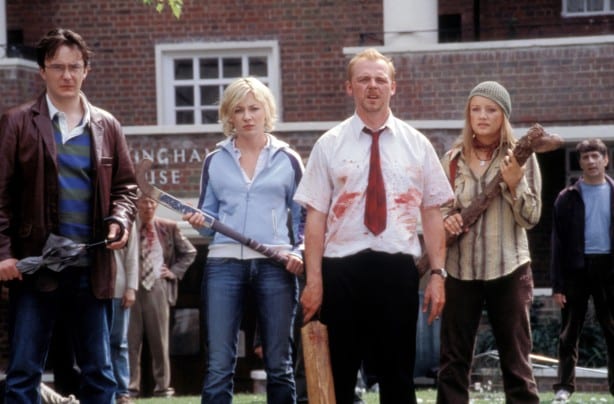
In Conclusion – Visceral Genres With Visceral Responses
The comedy horror movie sub-genre explores emotions on opposite sides of the same coin. Both horror and comedy create visceral reactions in the audience. In a good comedy horror movie, we’ll experience fear, followed by laughter, followed by fear again.
However, it’s not just the balance of these two genres that leads to a successful movie sub-genre but the way in which these genres heighten our emotions and put us on the edge of our seats. Both genres ideally provoke literal responses from their audiences, whether that be a laugh or a jump.
By looking at the different typical elements of both genres we can see how they’re well matched to each other. Both genres usually rely on characters in some way isolated from their everyday existence and thrown into a world which they must somehow find an escape from. In learning the tricks and tropes of one genre, one makes themselves well-placed to fit these tricks and tropes in with another.
This is what great comedy horror movies demonstrate more than anything; a comprehensive understanding of the nuance of each genre and what makes it work. Starting from this place of understanding is the way to write a great comedy horror movie and make ground in a genre still with a lot of untapped potential.
–What did you think of this article? Share It, Like It, give it a rating, and let us know your thoughts in the comments box further down…
– Struggling with a script or book? Story analysis is what we do, all day, every day… check out our range of script coverage services for writers & filmmakers.
This article was written by Lyra Fewins and edited by IS Staff.
Get *ALL* our FREE Resources
Tackle the trickiest areas of screenwriting with our exclusive eBooks. Get all our FREE resources when you join 60,000 filmmakers on our mailing list!


